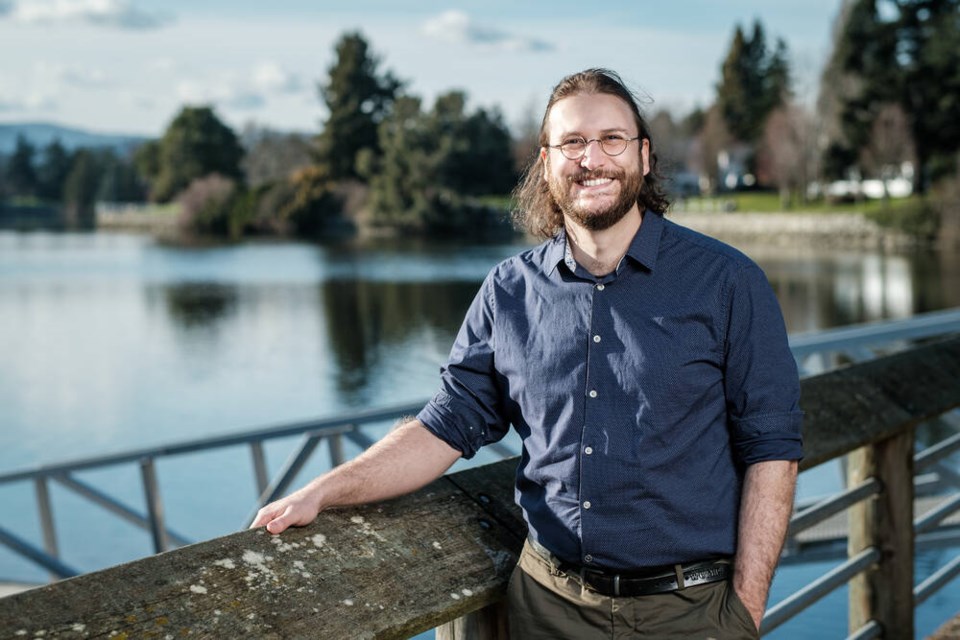Teale Phelps Bondaroff
Website: https://www.teale.ca/
Facebook: https://www.facebook.com/Teale.Phelps.Bondaroff
Twitter: https://twitter.com/TealePB
Other: https://www.tiktok.com/@tealepb
Are you associated with or running as part of a slate? If so, which one?
No
Do you live in the municipality where you are running, and if so, for how long? If not, what is your connection to that community?
Yes. I have lived in Saanich for 8 years
What is your occupation, and for how long?
Director of Research for OceansAsia, since 2018
Tell us about your previous elected and/or community experience.
Teale leads the Greater Victoria Placemaking Network’s Pocket Places Project, which maps, promotes, builds, and stocks little free libraries in Saanich and communities throughout the Capital Regional District. He is a road safety advocate who piloted a road mural in Saanich (on Falaise Crescent) as a road safety and community-building intervention. Teale co-founded the AccessBC Campaign for free prescription contraception in 2017. He currently serves as the chair of this grassroots campaign, and is an advocate for reproductive justice. Teale also has over 20 years of experience advocating for the environment, both professionally and as a volunteer.
Why are you running? What’s your motivation?
When I moved to Saanich to teach eight years ago, I found living in a dense neighbourhood and working full-time could be lonely. That’s when I started building little free libraries and got involved with placemaking. I’ve seen the impact municipal projects can have in building connected communities.
I’ve also worked on conservation issues around the world, developing policy at federal and provincial levels, but all of these policies need to be implemented at the local level. Municipal government has the most direct impact on people’s lives, and I want to do my part to make Saanich even better.
What are your top three issues?
• Affordable Housing for Everyone: Saanich should be a place where everyone has safe housing within their financial means. To do this, we need to improve and expand on existing affordable housing efforts.
• Safe and Accessible Streets: Streets are part of our public commons, and everyone should be able to use them safely, whether they walk, cycle, roll, or drive.
• Sustainable Communities: I want to make our community more sustainable by protecting our parks and green spaces, focusing on growth in core and village areas, strengthening support for resident-led community projects, and accelerating the implementation of Saanich’s climate plan.
What’s your vision for your community in 25 years?
I am working to build a Saanich that is sustainable, connected, and affordable. I take inspiration from the traditional streetcar suburb design, where density is focused in core areas, while walkable mixed-use buildings run along major corridors. This model is community-oriented and designed to promote healthy, active, and connected neighbourhoods.
Strategically increasing density is an effective way to both improve sustainability and reduce costs for residents. To do that, we need to focus on growth in core and village areas that are transit accessible, walkable, and connected with active transportation networks. I also want to maintain and improve our existing natural spaces, plant more street trees, promote local agriculture, and build food security in our community.
What’s one “big idea” you have for your community?
I want to mobilize municipal tools to help improve access to family doctors and child care. While basic policy-making in these areas is a provincial responsibility, we cannot add doctors and childcare to our community if we do not have space for them to operate.
One of the ways municipalities can act is by exploring tax exemptions and other creative municipal policy solutions to make space more accessible and affordable for those services. We need more affordable commercial space to attract doctors and child care to our communities. Supporting more mixed-use developments will not only build capacity for much-needed services, but also create more opportunities for local businesses and community spaces.



